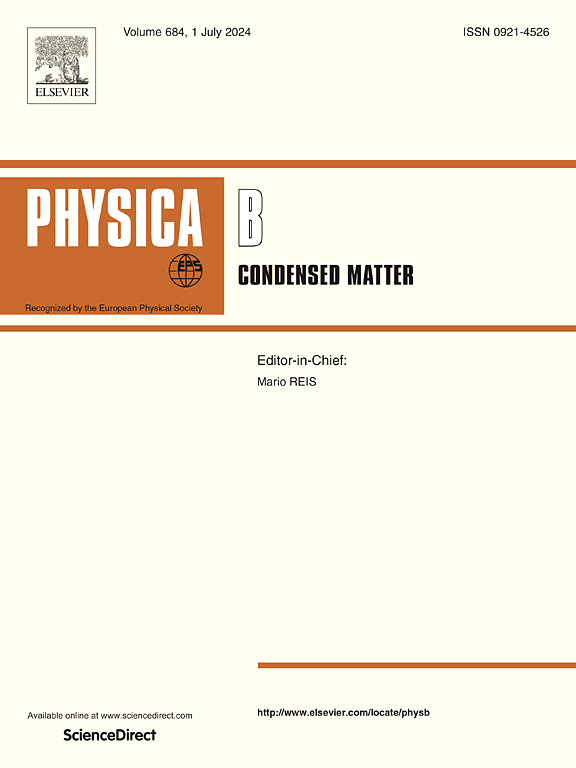Rapid synthesis and immobilization of ZnO nanorods on metal meshes and its application for organic dye removal
IF 2.8
3区 物理与天体物理
Q2 PHYSICS, CONDENSED MATTER
引用次数: 0
Abstract
Immobilizing photocatalysts onto supporting substrates presents a versatile and practical solution to overcome technical challenges associated with utilizing photocatalysts in their powder form. By depositing photocatalysts onto substrates, such as kanthal mesh, the need for particle separation and recovery during wastewater treatment processes is effectively circumvented. In this study, we focused on synthesizing zinc oxide (ZnO) nanostructures on metal mesh using the direct heating (DH) approach. This approach presents several benefits when relative to common fabrication methods such as hydrothermal and chemical vapor deposition, allowing for exceptionally rapid synthesis (completed in just 5 min) with minimal usage of electrical power. The formation of ZnO nanorods on supporting mesh was corroborated by FE-SEM, XRD, EDX, HR-TEM and XPS analyses. Notably, ZnO nanorods supported on kanthal meshes exhibited photocatalytic ability in degrading RhB dye under UV light, demonstrating their efficacy in dye removal. Overall, the facile DH approach for growing ZnO nanorods on kanthal mesh shows great potential for the mass production of photocatalyst modules tailored to be applied for wastewater treatment.
求助全文
约1分钟内获得全文
求助全文
来源期刊

Physica B-condensed Matter
物理-物理:凝聚态物理
CiteScore
4.90
自引率
7.10%
发文量
703
审稿时长
44 days
期刊介绍:
Physica B: Condensed Matter comprises all condensed matter and material physics that involve theoretical, computational and experimental work.
Papers should contain further developments and a proper discussion on the physics of experimental or theoretical results in one of the following areas:
-Magnetism
-Materials physics
-Nanostructures and nanomaterials
-Optics and optical materials
-Quantum materials
-Semiconductors
-Strongly correlated systems
-Superconductivity
-Surfaces and interfaces
 求助内容:
求助内容: 应助结果提醒方式:
应助结果提醒方式:


